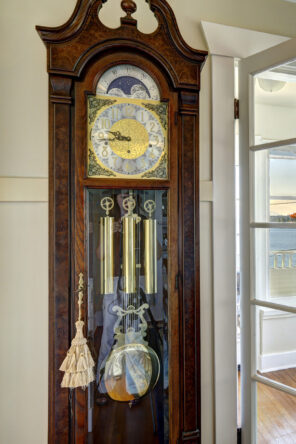
Modern / Contemporary Grandfather movements
NOTE: If you are not a clock professional, or familiar with the intricacies of your clock’s mechanism, we recommend calling Clock Repair Studio for professional service.
1) If there is a small arm sticking out of the dial to the right of the number three, and if it is set to the “Silent” position at the top of the slot, it should be safe to move the minute hand slowly forward until you reach the correct time without having to stop and wait for the ringing to stop every 15 minutes.
2) in the instance where the “Silent” setting is at the bottom of the slot, you may want to keep the switch in its current position as you will need to pause every 15 minutes to allow the chime and striking train to complete its before advancing the minute hand. You should be able to travel backwards, although you should do so gently and immediately stop if you encounter any resistance.
If the chime is not ringing properly after you switch it back on, it should reset itself during the following full hour.
3) If your clock lacks a “Silent” button or lever, you may need to rotate the minute hand counterclockwise and stop every15 minutes until the chimes and strike stop.


Antique Grandfather Clock Movements
If you are not a clock professional, or familiar with the intricacies of your clock’s mechanism, we recommend calling Clock Repair Studio for professional service.
The hour hand should never be changed unless you are convinced it can be done. Advance the minute hand, stopping at each quarter-hour to allow the chiming to end before moving on to the next. When moving the minute hand, be cautious and prepared to immediately stop if resistance is encountered.
